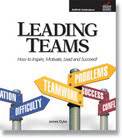Companies pay me thousands of dollars to help their teams become more effective. (That’s part of what I do as a management consultant.) In this new series, I’m going to give you some of the same information I share with my paying customers! These are simple, but powerful tips that can help you and your colleagues work together more effectively, regardless of your role or relationship.
Here’s what I tell teams and team leaders:
You must master the four “C’s” if you want to be an effective team!
Here’s the truth: Every organization needs help with team dynamics because teams permeate every organization, from the production line to the executive suite. And all teams have their share of bad habits, disconnects, divisive personalities, or rogue members. AND EVEN IF YOU ARE NOT ON A TEAM, you still function as part of the organization-wide “team” that all employees serve and support. So, the FOUR C’S apply to you as well.
The first C is COMMUNICATION. Team members need to learn how important it is to share information with one another, and especially how to share that information—in short, they need to learn how to talk to one another! That sounds simple enough, but it requires the right kind of communication climate, where team communication is defined by four essential qualities…where team members can trust communication is:
- Open
- Honest
- Direct
- Forthcoming
Let’s break that down…
OPEN communication means we can talk about anything. There are no elephants in the room—no taboo subjects that are “off the table.” That means team members are free to talk about what is bugging them—even free to complain and gripe.
Up Close and Personal
In my extensive experience as a consultant, I have served in every conceivable kind of organization—every industry, shape, and size—public as well as private. One of the most common challenges I have seen is when a team’s ability to perform is hampered by a problem or bureaucratic barrier that is beyond their authority to address. Especially annoying is when organizational leaders who do have the ability to address it step back and, for some reason, refuse to act. When that happens, frustrated team leaders often “table” any discussions of the problem, and prohibit team members from any further discussions of the issue.
That usually adds fuel to the fire of team frustration and anger, and makes the problem even worse!
What’s a leader to do?
A leader should always adopt the first rule of team communication: OPENNESS—there is no issue that is “off-limits.” In other words, there is nothing that we CAN’T talk about, as a team!
This problem is so common, I wrote a helpful article to give team leaders practical tips for handling it effectively with their team. You can access it on the Resource page of my blogsite. Here is the link: ProblemPaper.pdf (thebossdoctor.net)
That brings us to the second quality…
HONEST communication means that it is safe for team members to say what they really think, even if it is perceived as negative, critical, or complaining. Effective leaders want to know if their people have concerns, so they can address those issues openly and help their team members gain a better perspective as a result. Teams also need adversarial thinking, in order to avoid “groupthink.” The opinion that disagrees with the majority needs to be voiced and respected, not diminished or criticized.
Some leaders want unanimous agreement from their followers for every decision, issue, or solution. That is a dangerous goal! Worse, it may signal a leader who is deeply insecure and fearful of opposition, failure, or embarrassment! If you are that kind of leader, you may not even be aware that your team is sensing that—because they pick up unspoken “cues” from the way you respond to contrary opinions and ideas. It can be very subtle, but team members will eventually get the message: Don’t disagree with the boss!
It’s rarely as overt as Sam Goldwyn famously communicated:
“I don’t want any yes-men around me. I want everybody to tell me the truth even if it costs them their job.”
HONEST communication allows your team members to give you the kind of information you really need, in order to make wise decisions and lead your team effectively!
The next quality is equally important…
DIRECT communication means setting gossip aside and choosing healthy assertiveness instead. So… if a team member has an issue with another team member, they confront the person about it directly instead of complaining to others. This is what assertiveness is—the healthy ability and capacity to communicate clearly what you want or need from others.
Assertiveness is an absolute necessity for healthy, functional relationships.
But assertive communication is more effective when:
- The person sharing the information is using a careful, diplomatic approach; and
- The person receiving the information is able to set their egos aside, to listen patiently and objectively to the feedback. [NOTE: This is not as easy as it sounds. That’s one of the reasons I have a LOT of work as an executive coach!]
DIRECT communication also means NOT “beating around the bush.” DIRECT communication requires getting to the point, and being clear and focused about the information and issues involved.
That brings us to the fourth quality:
FORTHCOMING communication means we don’t have to drag information out of one another. We make a point of sharing information instead of trying to exert power by “controlling access.” The more freely teams share information, the easier it is for everyone to do their job, solve problems, work creatively, and collaborate effectively.
Up Close and Personal
One of the communication exercises I have teams do is Continue / Stop / Start. This exercise allows team members to give each other valuable one-on-one feedback to help them become more effective in working together as a team. It gives team members an opportunity to actually apply the four qualities of effective team communication in a way that surfaces valuable information that has the ability to enhance team collaboration.
This is the exercise in detail…
Continue requires a team member to tell a fellow team member: This is what you do that makes it easy for me to work with you…so please CONTINUE doing that.
Stop encourages a team member to tell a fellow team member: This is what you are doing that is making it difficult for me to work with you… I would like you to STOP doing it. And finally…
Start gives a team member an opportunity to tell a fellow team member: This is something you aren’t doing yet that would help me collaborate more effectively with you… I would like you to START doing this.
Continue / Stop / Start is just one of many resources I use to help teams become more collaborative, productive, effective, and successful!
If you want to do a deeper dive into the qualities of communication climate, you MUST read this blogpost I published TWO YEARS AGO: Can We Talk??? | The Boss Doctor
It will introduce you to some expansive tools that will teach you how to communicate much more constructively with others, especially with your own team!
And if you want more help to lead and manage your team, call us! We have helped team leaders in hundreds of organizations, equipping them with practical tools to help their people work together more effectively.
Until next time… Yours for better leaders and better organizations,
Dr. Jim Dyke – “The Boss Doctor” ™ helping you to BE a better boss and to HAVE a better boss!






